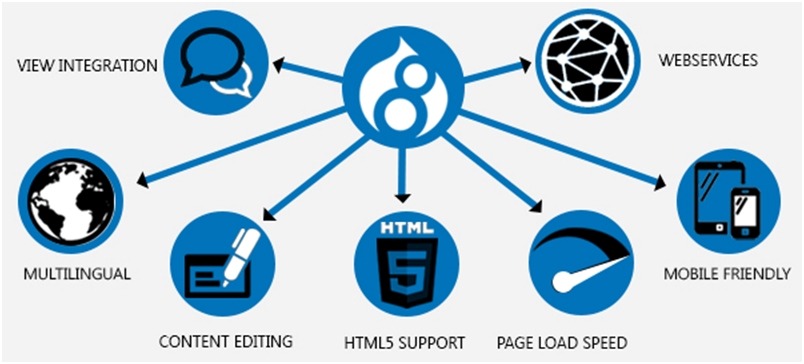We are going to start doing a “roundup” of articles and news related to Drupal in the coming months. There is so much information being written, we are sure we’re missing some of the important things happening in our daily news tools and filters. Posting updates like this will help us keep an eye on what’s new with Drupal 8 and also give our readers a good idea of upcoming features and improvements in Drupal and in the Drupal community.
April 16th Drupal Roundup
1) Drupal 8 Page Caching Enabled by Default
Unlike Drupal 7, the newest automatic caching capability in Drupal 8 will be a big winner with those wanting more improvements in page speed and load times. The benchmarks of the new Drupal 8 caching are obviously improved over the Drupal 7 caching options. This article mentioned that tiny sites should be able to serve about 100 requests per second, which is about >8 million requests per day… on shared hosting! Drupal 8 page caching will be an enormous advantage for larger sites too. This is definitely a win-win for Drupal and all who use it.
2) Drupal 8 Faster for Administrators, and Cheaper and Easier for Site Managers
The good folks over at ChapterThree.com have written a great article on the benefits of using Drupal 8 by website administrators or Drupal website managers. A few of the features discussed include Drupal 8 being faster based on new features that are simply expected within a modern CMS. These include things like a WYSIWYG editor, less hassle or paying for custom Drupal development to simply change certain administration listings since they are now in Views, and less frustrations with such things as managing the same block in multiple regions, among other things. Be sure to check out their video in the article for more info.
3) Backbone.js and Underscore.js in Drupal 8
Some of the new improvements can be found “under the hood” of Drupal 8. Two such improvements are with Backbone.js and Underscore.js. What are these to libraries? Backbone.js “gives structure to web applications by providing the right type of models with key-value binding and custom events, collections with a rich API of enumerable functions, views with declarative event handling, and connects it all to your existing API over a RESTful JSON interface.” By referring to “data binding” it’s basically a fancier way describing how Backbone.js helps to keep application data and the user interface (UI) in sync more easily. Underscore.js is a dependency of Backbone.js and used more widely throughout core. If a lot of this is over your head, the descriptions in this article will give you a better idea of how it all works to your benefit in Drupal 8!
4) Really in-depth look at Drupal 8 Theming
A major part of Drupal 8’s theming strengths comes from it adopting certain theming principles from other technologies like Symfony, YAML, Twig, and Backbone.js (mentioned above). This article goes into more details with integrations with Twig (a popular templating engine for PHP) and other core theming changes and improvements. Definitely worth a quick read if you are into Drupal theming.
5) Features for Drupal 8 Explained in more Detail
The team over at Phase2technology.com explains all about things like the Features module and “Configuration Management Initiative (CMI)” in Drupal 8, which handles content and configurations. The Features module is mainly for developers. But head over to the article to understand how these things will impact you and your Drupal website for Drupal 8.

